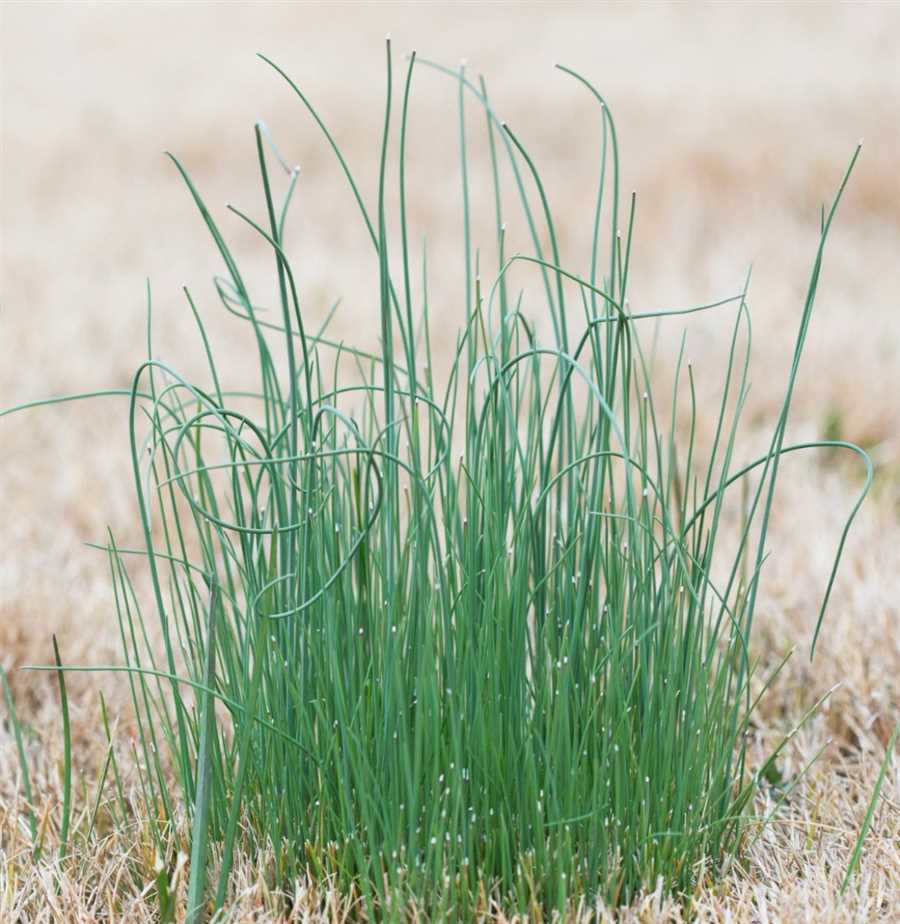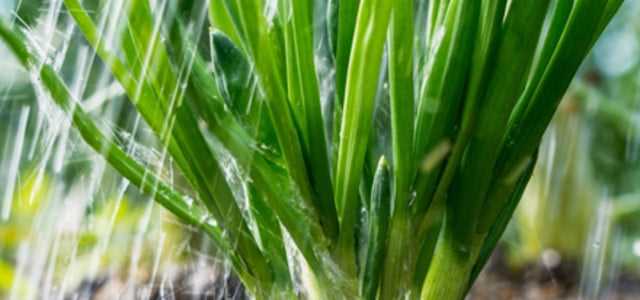



Wild onions, also known as ramps or wild leeks, are a type of edible plant that grows in the wild. They have a strong onion-like flavor and are often used in various culinary dishes. But can you actually cook with wild onions?
The answer is yes! Wild onions can be a delicious addition to many recipes. Their unique flavor adds a distinct taste to dishes, and they can be used in both raw and cooked preparations. However, it’s important to note that wild onions are quite potent, so they should be used sparingly to avoid overpowering other flavors in a dish.
One popular way to use wild onions is in soups and stews. Their strong flavor adds depth and complexity to broths, making them a popular ingredient in traditional dishes. Wild onions can also be sautéed with other vegetables or used as a garnish for salads and roasted meats. Their versatility makes them a great addition to many different types of cuisines.
When cooking with wild onions, it’s important to properly clean and prepare them. Remove any dirt or debris and trim the roots before using. They can be used in their entirety, including the green tops and bulbs. Just remember to use them in moderation to avoid overpowering the dish. So go ahead and experiment with wild onions in your cooking and enjoy the unique flavor they bring to your dishes!
Benefits of Cooking with Wild Onions
Wild onions, also known as ramps or spring onions, are a delicious addition to any dish. Not only do they add a unique flavor, but they also come with many health benefits. Here are a few reasons why you should consider cooking with wild onions:
Nutritional Value
Wild onions are packed with essential vitamins and minerals. They are a good source of vitamin C, which helps boost the immune system and promotes healthy skin. They also contain vitamin A, which is important for good vision. Additionally, wild onions are rich in folate, iron, and potassium.
Antioxidants
Wild onions are known for their high levels of antioxidants, which help protect the body against free radicals. Free radicals are unstable molecules that can cause damage to cells and contribute to chronic diseases. Consuming foods rich in antioxidants, such as wild onions, can help reduce the risk of these diseases.
Anti-inflammatory Properties
Wild onions contain anti-inflammatory compounds that can help reduce inflammation in the body. Chronic inflammation is linked to various health conditions, including heart disease and arthritis. Adding wild onions to your meals can help reduce inflammation and promote overall health.
In conclusion, cooking with wild onions not only adds a delicious flavor to your dishes but also brings numerous health benefits. From their nutritional value to their antioxidant and anti-inflammatory properties, wild onions are a nutritious and tasty addition to any meal.
Unique Flavor and Aroma
Wild onions have a unique and distinct flavor and aroma that can enhance the taste of various dishes. Their flavor is often described as a combination of garlic and onion, with a slightly milder taste.
When cooked, wild onions release their aroma, adding a delightful fragrance to the dish. This aroma can tantalize the senses and make the food more appetizing.
The unique flavor and aroma of wild onions make them a popular choice for use in many culinary applications. From soups and stews to salads and stir-fries, wild onions can add a burst of flavor to any dish.
It’s important to note that the flavor and aroma of wild onions can vary depending on the species and the environment in which they are grown. Some wild onions may have a stronger flavor and aroma, while others may be more mild.
Overall, wild onions offer a unique culinary experience with their distinct flavor and aroma. Incorporating them into your cooking can add depth and character to your dishes, making them more enjoyable and memorable.
Nutritional Value
Wild onions are not only delicious, but they also offer a variety of health benefits. They contain several essential nutrients and have been used for their medicinal properties for centuries.
Vitamins and Minerals
Wild onions are a rich source of various vitamins and minerals. They are particularly high in vitamin C, which is essential for a healthy immune system and aids in collagen production. They also provide a good amount of vitamin A, which is important for vision and skin health. In addition, wild onions contain minerals such as potassium, calcium, and iron.
Here is a breakdown of the nutritional value of wild onions per 100 grams:
| Nutrient | Amount |
|---|---|
| Calories | 35 |
| Carbohydrates | 7.3 grams |
| Fiber | 2.6 grams |
| Protein | 1.2 grams |
| Fat | 0.2 grams |
| Vitamin C | 18 milligrams |
| Vitamin A | 1190 IU |
| Potassium | 276 milligrams |
| Calcium | 37 milligrams |
| Iron | 0.6 milligrams |
Antioxidants and Other Compounds
Wild onions also contain various antioxidants, including quercetin and kaempferol. These antioxidants help protect against cell damage and may have anti-inflammatory effects. Additionally, wild onions contain sulfur compounds, such as allicin, which have been associated with potential health benefits.
It is important to note that the nutritional value may vary slightly depending on the specific species of wild onion and its growing conditions. However, overall, wild onions are a nutritious addition to your diet.
Versatile Ingredient
Wild onions are a versatile ingredient that can be used in a variety of dishes. Whether you want to add a burst of flavor to a salad, a stir-fry, or a soup, or if you want to use them as a topping for baked potatoes or tacos, wild onions are a great choice.
These onions have a distinct, pungent flavor that is similar to regular onions, but with an added hint of spiciness. This makes them a perfect ingredient for dishes that need a little extra kick. They can be used raw for a more intense flavor, or cooked to mellow out their taste.
Wild onions can be used in both cooked and raw dishes. They can be sautéed with other vegetables for a delicious side dish, or chopped and added to dips and salsas for a fresh and zesty flavor. They can also be pickled to preserve their flavor and used as a condiment or a topping.
Additionally, wild onions can be used in a variety of cuisines. They are commonly used in Asian, Mediterranean, and Mexican cuisines, but can also be a versatile addition to any dish from any cuisine.
Overall, wild onions are a versatile and flavorful ingredient that can elevate any dish. Whether you want to add a punch of flavor to your favorite recipes or experiment with new flavors and cuisines, wild onions are a great choice.
Culinary Uses

Wild onions, also known as ramps, have a strong and pungent flavor that is a combination of garlic and onion. This unique flavor makes them a popular ingredient in many dishes.
One of the most common ways to use wild onions is to sauté them with other vegetables. They can be added to stir-fries, soups, stews, or omelets for an extra burst of flavor. Wild onions can also be used as a topping for pizzas or added to pasta dishes.
Another popular way to enjoy wild onions is by pickling them. Pickled wild onions can be used as a condiment or added to salads and sandwiches for a tangy and flavorful kick. They can also be added to cheese boards to add a unique twist to the selection of cheeses.
Health Benefits
In addition to their delicious taste, wild onions are also packed with nutrients. They are a good source of vitamins A and C, as well as minerals like calcium, iron, and potassium. Wild onions are also known for their antioxidant and anti-inflammatory properties, making them a healthy addition to any diet.
Foraging and Harvesting
Wild onions are a versatile ingredient that can be foraged and harvested in various locations. Here are some tips for finding and gathering wild onions:
Identification
Before embarking on your foraging adventure, it is essential to know how to identify wild onions correctly. Wild onions, also known as Allium canadense, are part of the Allium family and typically grow in fields, meadows, and woodland areas. They can be identified by their long, slender green leaves that resemble chives or scallions.
Location

Wild onions can be found in different regions, depending on the climate and season. They tend to thrive in moist, well-drained soil and are commonly found in North America, Europe, and Asia. Look for them in fields, meadows, or near bodies of water.
It’s important to note that wild onions can resemble other plants, such as lily of the valley or Death Camas, which are toxic. Ensure you have correctly identified wild onions before harvesting.
Harvesting
When harvesting wild onions, it’s crucial to be mindful of sustainable foraging practices. Here are some guidelines to follow:
| Do’s | Don’ts |
|---|---|
| Harvest only what you need | Over-harvest or damage the plants |
| Leave some bulbs in the ground for regrowth | Collect from polluted or contaminated areas |
| Use scissors or a sharp knife to avoid uprooting the entire plant | Take plants from private property without permission |
After harvesting wild onions, make sure to wash them thoroughly to remove any dirt or contaminants. Store them in a cool, dry place or use them immediately in your cooking adventures.
Foraging and harvesting wild onions can be a rewarding experience, providing fresh and flavorful ingredients for your culinary creations. Remember to always practice ethical foraging and be respectful of the natural environment.
Questions and answers
What are wild onions?
Wild onions are a type of wild plant that belong to the onion family. They have a similar taste and aroma as cultivated onions, but they grow in the wild and are not typically planted or harvested by humans.
Can you eat wild onions?
Yes, wild onions are safe to eat and can be used in cooking. However, it is important to correctly identify them, as there are some toxic plants that resemble wild onions.
How do you find and harvest wild onions?
Wild onions can be found in meadows, fields, and woodlands. They often grow in clusters and have distinctive long, slender leaves and a small white bulb. To harvest them, gently pull them out of the ground, being careful not to damage the bulb.
What dishes can you make with wild onions?
Wild onions can be used in a variety of dishes to add flavor and a mild onion taste. They can be used fresh in salads, added to soups and stews, or sautéed and used as a topping for meat or roasted vegetables.
Are there any health benefits to eating wild onions?
Yes, wild onions are rich in vitamins and minerals, including vitamins A, C, and E. They also contain antioxidants and have been used in traditional medicine for their potential antibacterial and antifungal properties.
Can I use wild onions in cooking?
Yes, you can use wild onions in cooking. They have a similar flavor to regular onions and can be used in various dishes.







